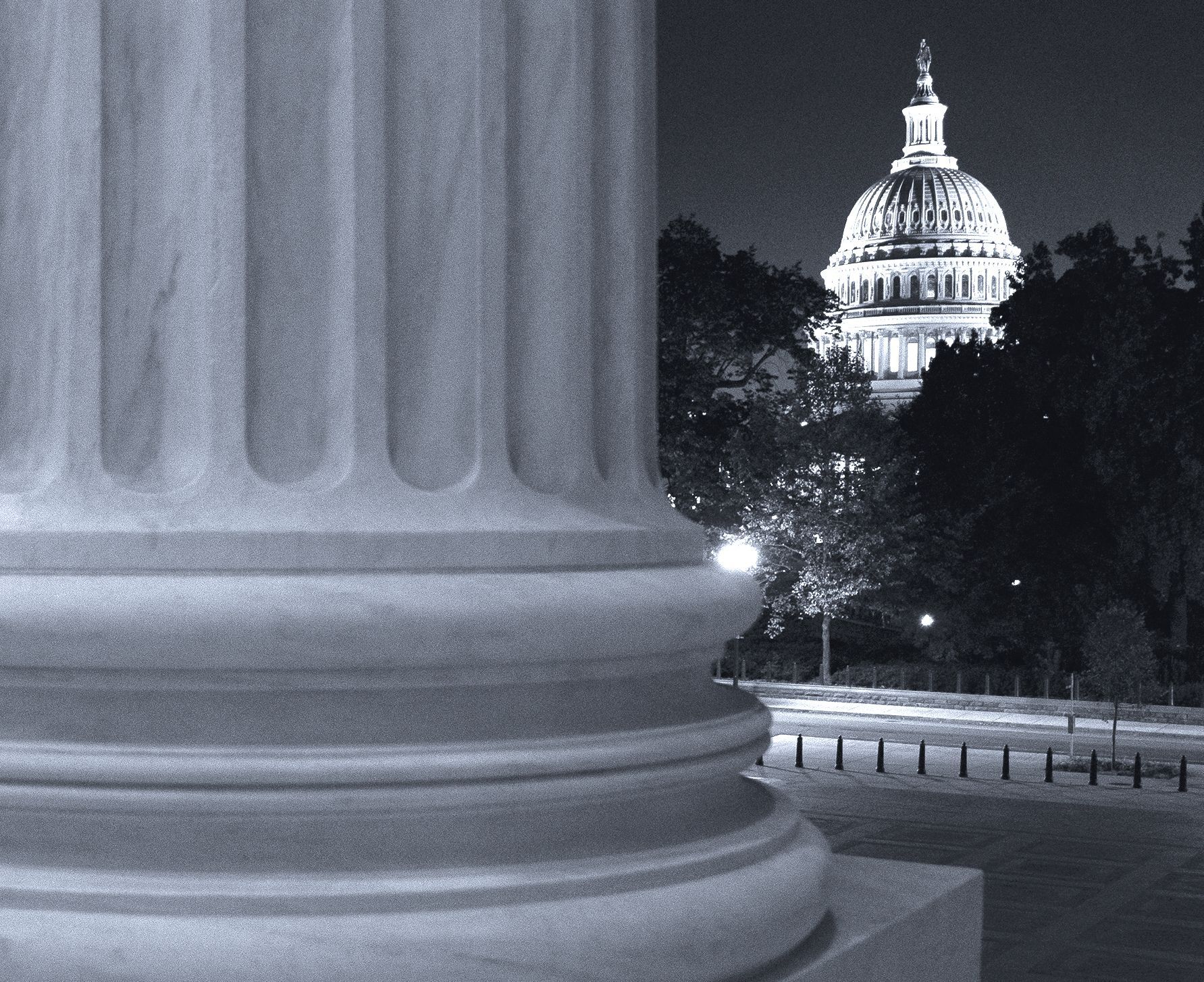
On September 26, 2023, the Federal Trade Commission (FTC) and 17 state attorneys general filed a complaint in the U.S. District Court for the Western District of Washington against Amazon.com, Inc. under Section 5 of the FTC Act and Section 2 of Sherman Act.1 Led by Chair Lina Khan, who first rose to prominence following the publication of her 2017 law review article “Amazon’s Antitrust Paradox,” the FTC voted 3-0 to file the complaint alleging that Amazon has amassed and abused its monopoly power to the detriment of sellers and customers alike. In a press release and blog post, Amazon responded by vigorously defending its business practices and refuting the FTC's allegations and characterization of the market.2
Key allegations in the 170-page complaint include restrictions Amazon puts on sellers with respect to pricing and discounting as well as requirements to use Amazon’s own fulfillment services, “Fulfilled by Amazon.” This suit marks the latest in a series of high-profile antitrust lawsuits brought by the FTC in recent years, including against Facebook parent Meta and Microsoft, as part of a renewed emphasis on antitrust enforcement in technology markets.3 Additionally, the FTC continues to apply its broadened interpretation of “unfair methods of competition” as previewed by its 2022 policy statement on the scope of Section 5.4
The Business Practices at Issue
The FTC alleges that Amazon has maintained monopolies impacting both consumers and online sellers through two anticompetitive schemes: (1) anti-discounting practices and (2) coercing sellers to use Fulfilled by Amazon fulfillment services.5
Anti-discounting: The FTC alleges that Amazon “relentlessly stifles actual price competition” through algorithmic price surveillance and contractual obligations, “wielding its monopoly power” to prevent sellers from offering lower prices off the platform. The extensive price-tracking scheme allegedly crawls the internet, monitors sellers’ pricing, and punishes those sellers when they offer products elsewhere online for lower prices than those at which the same products are offered on Amazon. When Amazon detects a lower price on other online stores, Amazon allegedly punishes those sellers by listing them lower in search rankings or disqualifying them from the “Buy Box,”6 an Amazon design feature that allows a purchaser to buy a product directly on the product detail page.7 The FTC explains that “winning” the Buy Box is essential for sellers to be successful on Amazon’s marketplace.8 In addition, for its most important sellers, Amazon allegedly places additional contractual limitations via the “Amazon’s Standards for Brands” program through which Amazon can not only disqualify such sellers from the Buy Box, but also remove them from Amazon Marketplace altogether, if, for example, Amazon finds a seller offering lower prices elsewhere online.
The FTC argues that these anti-discounting strategies have created a price floor that prevents Amazon from facing price competition from other online stores. The FTC also alleges that Amazon uses similar tactics to prevent price competition on products that Amazon sells itself, detecting discounts on those products both on and off Amazon and preventing price cuts.
Coercing Sellers to Use Fulfilled by Amazon Services: The FTC also alleges that Amazon conditions sellers' ability to be "Prime eligible" on their use of Amazon's order fulfillment service, effectively raising the costs of multihoming on non-Amazon marketplaces and foreclosing independent fulfillment providers from being able to compete to fulfill Prime orders on Amazon. The FTC indicates that a significant portion of sales go to Prime-eligible sellers on Amazon’s marketplace given the enormous reach of Amazon’s Prime subscription program.
The Markets at Issue
The relevant market is the crux of any antitrust case and is usually hotly contested by the parties. Here, the FTC alleges that Amazon has monopoly power in two relevant product markets, (1) the “online superstore market” in which Amazon interacts with customers and (2) the “market for online marketplace services” in which Amazon interacts with online sellers:
- The online superstore market is defined as distinct from traditional brick-and-mortar retailers and from online retailers offering a more limited selection. Per the FTC, online superstores offer both “breadth” (items in multiple product categories) and “depth” (different brands, sizes, colors, price points) of products to customers, encouraging customers to return and shop regularly.9 This in turn allows the online superstore to amass data on repeat purchases, across product categories, and enables better tailoring and personalization over time. The FTC alleges that Amazon has a market share greater than 60 percent (and growing).10
- Online marketplace services are defined as a suite of services that “facilitate sellers making online sales to U.S. shoppers without having to directly operate a store.”11 For a commission or fee, merchants utilize online marketplace services to reach an existing, built-in customer base, all while retaining control over pricing, product descriptions, and the like. The FTC highlights access to a large customer base or “built-in audience of frequent shoppers and loyal customers”12 as the most important characteristics of an online marketplace. The FTC argues entities like SaaS providers and others offering tools and products to enable merchants to create, launch, and/or manage their own e-commerce storefront are not reasonably interchangeable with online marketplace services, because those services lack such a preexisting customer base.13 Further, the FTC argues that selling a product as a vendor to a retail store, whether online or offline, is distinct from buying online marketplace services because a vendor-retail relationship involves giving up physical control of the goods and the ability to set prices.14 In this market, Amazon is alleged to have a market share greater than 66 percent (and growing).15
While these are two distinct markets, the FTC alleges that “feedback loops” between them reinforce Amazon’s monopoly power in each. For example, the platform relies on repeat customers to attract new sellers, who in turn attract new repeat customers, who in turn leave more product reviews and provide more data, enabling Amazon to better retain customers, and so on. According to the FTC, Amazon refers to this self-reinforcing loop as its “flywheel” and seeks to prevent other competitors from developing flywheels of their own.16 The FTC argues that the presence of significant entry barriers alongside strong network effects and economies of scale have enabled Amazon to amass the monopoly power it now wields anticompetitively.
Key Observations
Like the FTC’s—and the DOJ’s—other recent actions against technology companies, this lawsuit showcases growing skepticism of certain market conduct and exemplifies the government’s increased level of scrutiny on technology markets. Among the insights:
- The removal of pricing parity requirements or Most Favored Nation (MFN) clauses from contractual language does not alone remove enforcement risk. Here, the FTC focuses on Amazon’s conduct penalizing sellers from offering lower prices, only referencing Amazon’s removal of its pricing parity clause in passing.17 Clearly, the FTC is focused on market conduct, even in the absence of expressly restrictive contractual language.
- The FTC includes a separate count for “unfair methods of competition” under Section 5(a) of the FTC Act. Prior to the 2022 policy statement, Section 5(a) was read by many to be congruent with the Sherman Act. By including a separate Section 5(a) count, the FTC suggests some of Amazon’s alleged conduct violates the FTC Act irrespective of whether it also violates the Sherman Act. This signals an aggressive posture by the FTC and a willingness to use all tools in its arsenal.
- The FTC considers Amazon a force in advertising. The FTC explicitly calls out the vast reach of Amazon’s advertising, highlighting just how many consumers see its advertisements. The FTC also treats an increase in the number of advertisements Amazon shows as degrading quality by harming the overall consumer experience.
- The FTC is skeptical about the integration of distribution services into an e-commerce platform. Operators of online platforms should consider the ways in which integrating distribution services will affect sellers or merchants on their platform. The FTC claims that Amazon does not just require sellers to use Amazon distribution services, but also that Amazon functionally requires sellers to set aside a large amount of stock dedicated solely to sales on Amazon.
Remedies Sought and the Road Ahead
Through this lawsuit, the FTC and state attorneys general seek injunctive relief to put an end to Amazon’s business practices, as well as possible structural relief. The latter request echoes the lengthy 2020 report on restoring competition in the digital economy published by the House Judiciary Subcommittee on Antitrust during Chair Khan’s tenure as Democratic counsel.18 That report called for structural separations where dominant platforms compete with others dependent on their infrastructure. Asked soon after the lawsuit was filed whether the FTC is envisioning possible structural remedies for Amazon, Chair Khan replied only that, at least for now, the FTC’s focus is on Amazon’s liability, as opposed to specific remedies.19 If Amazon's blog response is any indication, it is likewise focused—on vigorously defending against any liability.
For more information on this lawsuit or any related matter, please contact any member of Wilson Sonsini’s antitrust and competition practice.
Ted Serra, Shaina Vinayek, and Daphne Rosehill contributed to this Wilson Sonsini alert.
[1] Complaint, FTC v. Amazon.com, No. 23-01495 (W.D. Wash. Sep. 26, 2023), ECF No. 1.
[2] Press Release, Read Amazon’s response to the FTC’s antitrust complaint, Amazon (Sep. 26, 2023) https://www.aboutamazon.com/news/company-news/amazon-response-to-ftc-antitrust-lawsuit; David Zapolsky, The FTC’s lawsuit against Amazon would lead to higher prices and slower deliveries for consumers—and hurt businesses, Amazon (Sep. 26, 2023), https://www.aboutamazon.com/news/company-news/amazon-ftc-antitrust-lawsuit-full-response.
[3] The FTC has submitted notice that the instant case is related to three putative class action cases against Amazon brought by individuals who purchased goods on Amazon’s marketplace, on any other retail e-commerce channel, and on Amazon’s marketplace through Amazon’s Buy Box and Fulfilled by Amazon. The FTC also notified the court of three pending actions brought under state law, two brought by the District of Columbia, and California attorneys general and a class action under state law pending in the Southern District of New York. Notice of Related Cases, Notice of Pendency of Other Action, FTC v. Amazon.com, No. 23-01495 (W.D. Wash. Sep. 26, 2023), ECF Nos. 4 & 5.
[4] FTC, Comm’n File No. P221202, Policy Statement Regarding the Scope of Unfair Methods of Competition Under Section 5 of the Federal Trade Commission Act (2022), https://www.ftc.gov/system/files/ftc_gov/pdf/P221202Section5PolicyStatement.pdf.
[5] Though there has been significant interest among regulators and legislatures on issues of technology platforms preferencing their own offerings over competing ones using their services, the FTC did not specifically allege that Amazon self-promotes or self-preferences its own Amazon Basics offerings over competing products offered by sellers on its platform.
[6] If there are multiple sellers of the same item, Amazon uses a proprietary algorithm to determine which seller to feature in the Buy Box. Buyers would have to navigate to the “Other Sellers on Amazon” menu to purchase from sellers who do not win the Buy Box.
[7] In early 2019, Amazon allegedly stopped applying the price parity clause in its Business Solutions Agreement following a public letter from Senator Richard Blumenthal to the FTC and DOJ. The move followed a similar change in Europe arising from an investigation by European antitrust authorities in 2013. The complaint alleges that in practice Amazon never stopped enforcing its price parity expectation on its sellers, but rather made price parity a requirement for Buy Box eligibility, which increases a product's visibility and sales potential.
[18] The House Judiciary Committee’s report calls for structural separations prohibiting dominant intermediaries from operating in markets that place the intermediary in competition with firms dependent on its infrastructure. Majority Staff of H. Subcomm. on Antitrust, 117th Cong., Investigation of Competition in Digital Markets (Comm. Print 2022).
[19] During an interview with Bloomberg, when asked about the complaint’s reference to structural relief and an implied breakup, Chair Khan responded: "So at this stage the complaint is really focused on the issue of liability. We lay out a scheme that we believe violates the U.S. antitrust laws. What we note in the complaint is that these different aspects of Amazon's scheme have an aggregated effect. So the harm is accumulating, there are feedback loops between the harms, and so the net exclusionary effect of Amazon's conduct is quite significant. Ultimately, we'll want to make sure that any remedy is halting the illegal conduct, preventing a recurrence, and ensuring that Amazon is not able to profit and benefit from its illegal behavior. So, right now were squarely focused on the question of liability, but when we get to the issue of remedy those are going to be the principles we'll be focused on." Interview by Peggy Collins with Lina Khan, Chair, Fed. Trade Comm’n (Sep. 27, 2023), https://www.youtube.com/watch?v=6T_ScwgiQys.
Contributors
- Privacy Policy
- Terms of Use
- Accessibility

